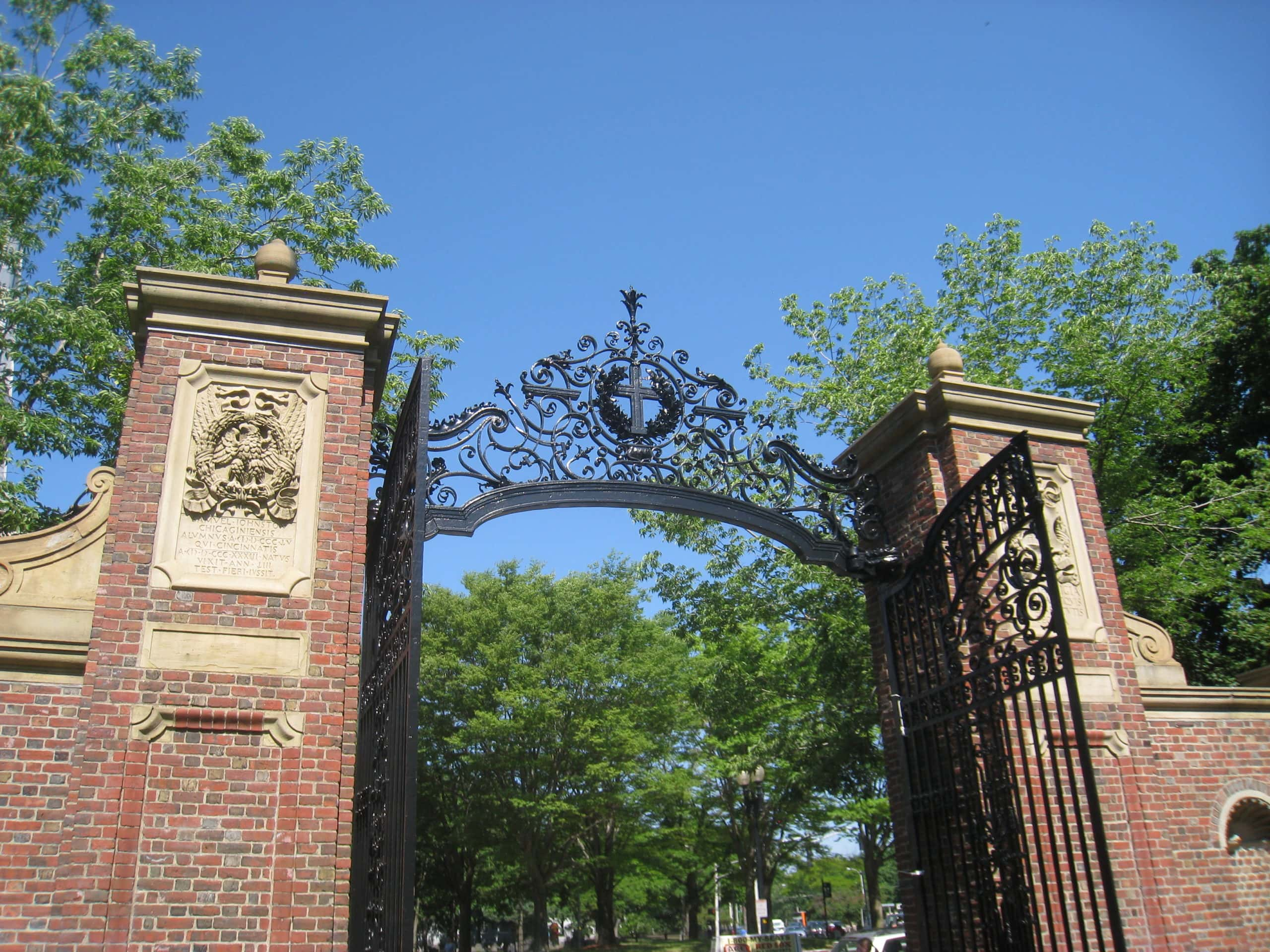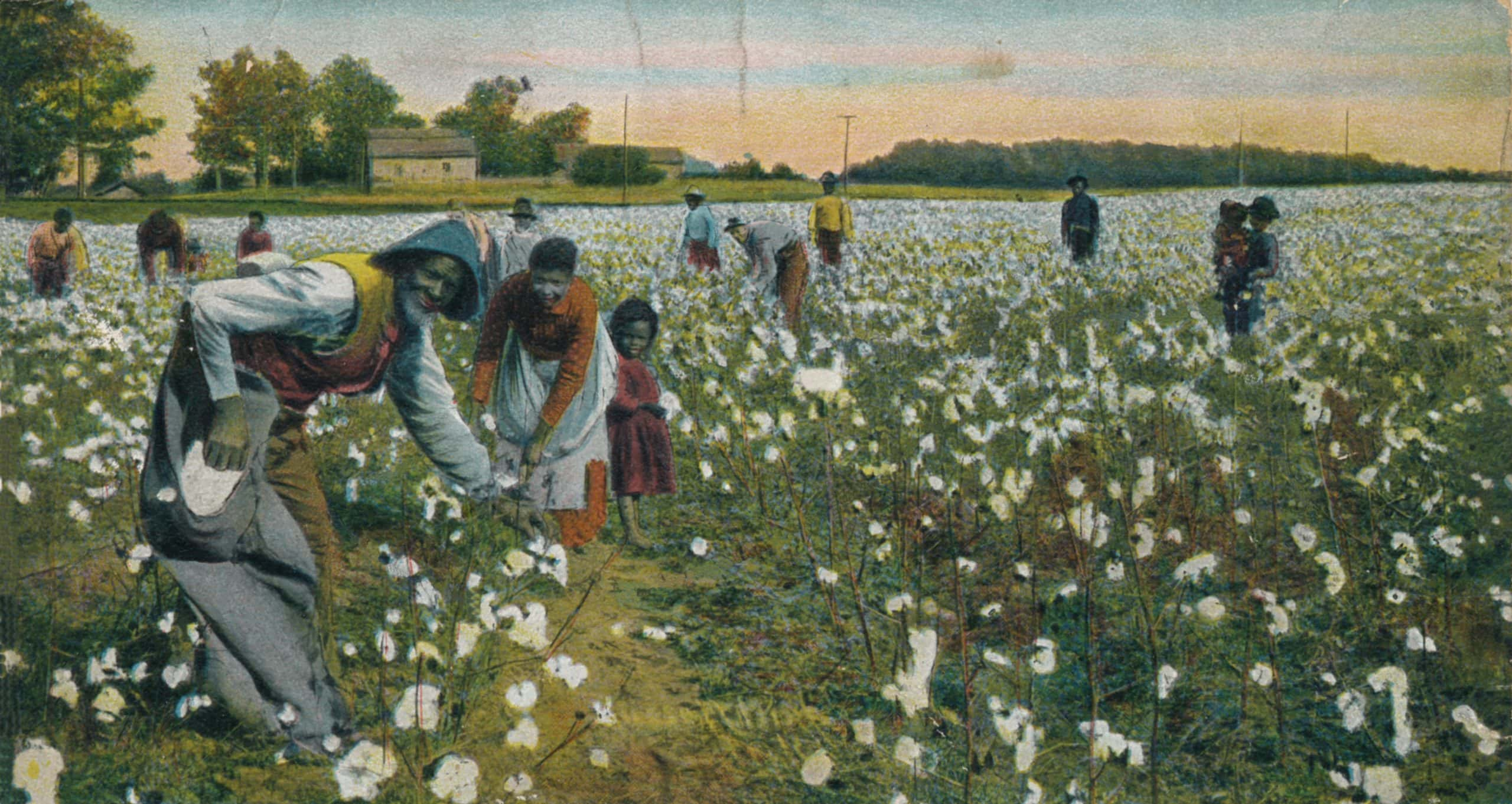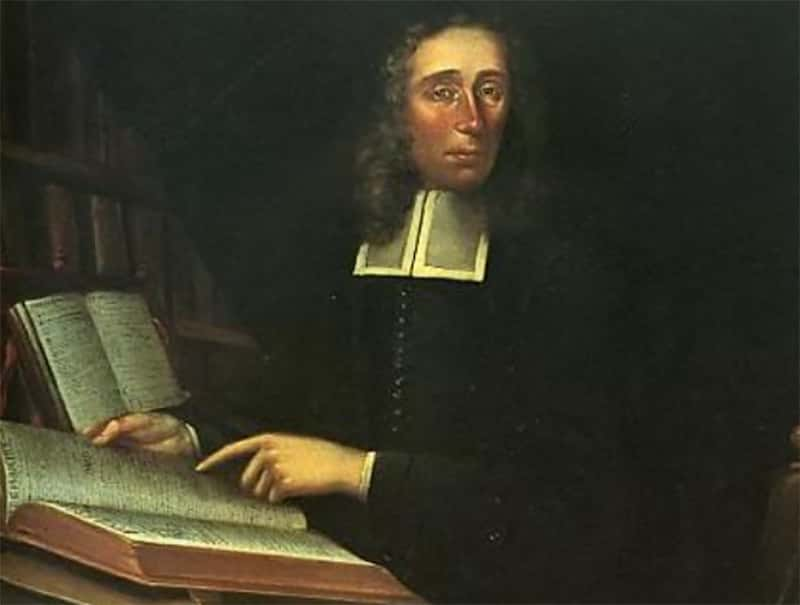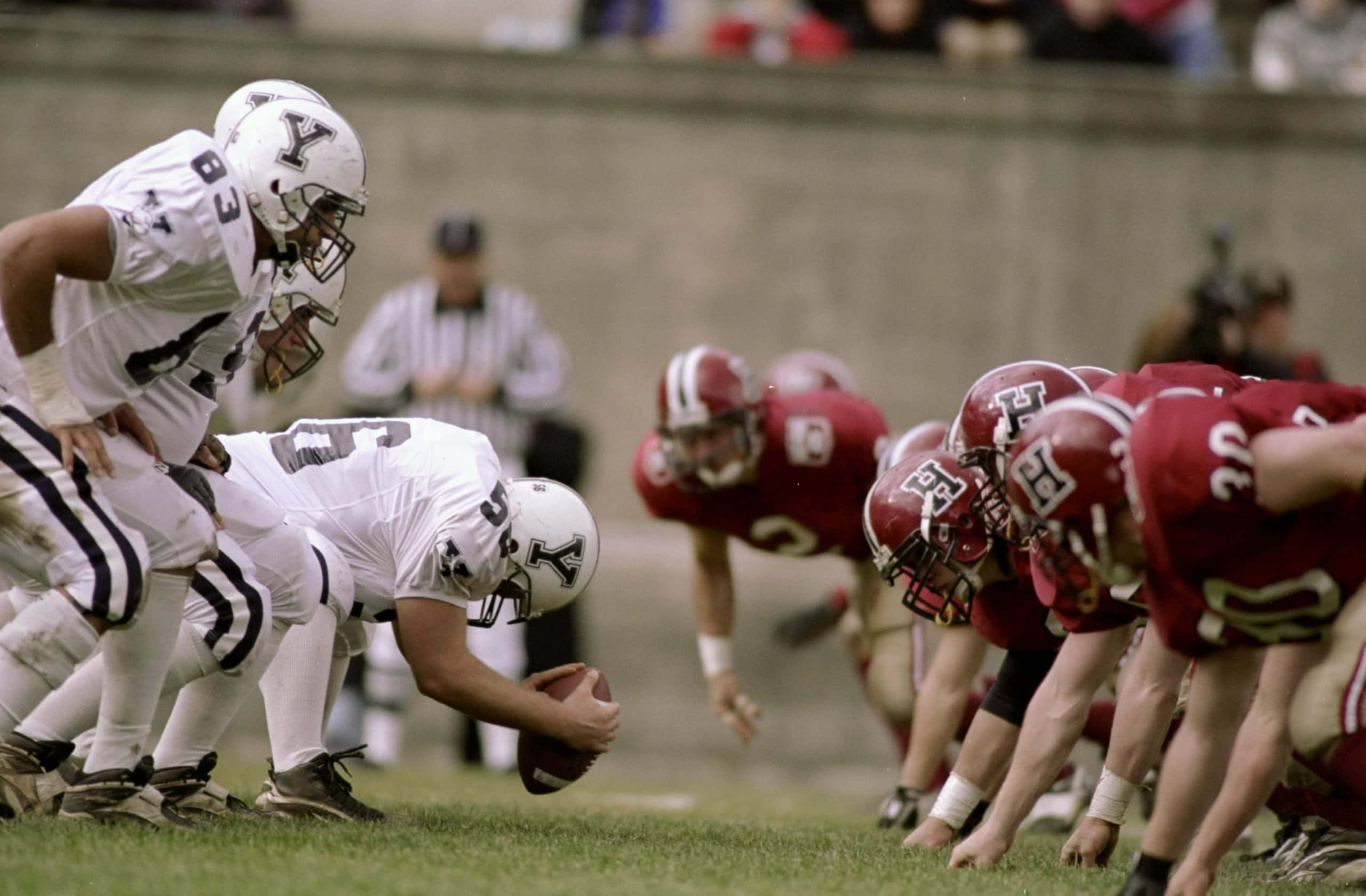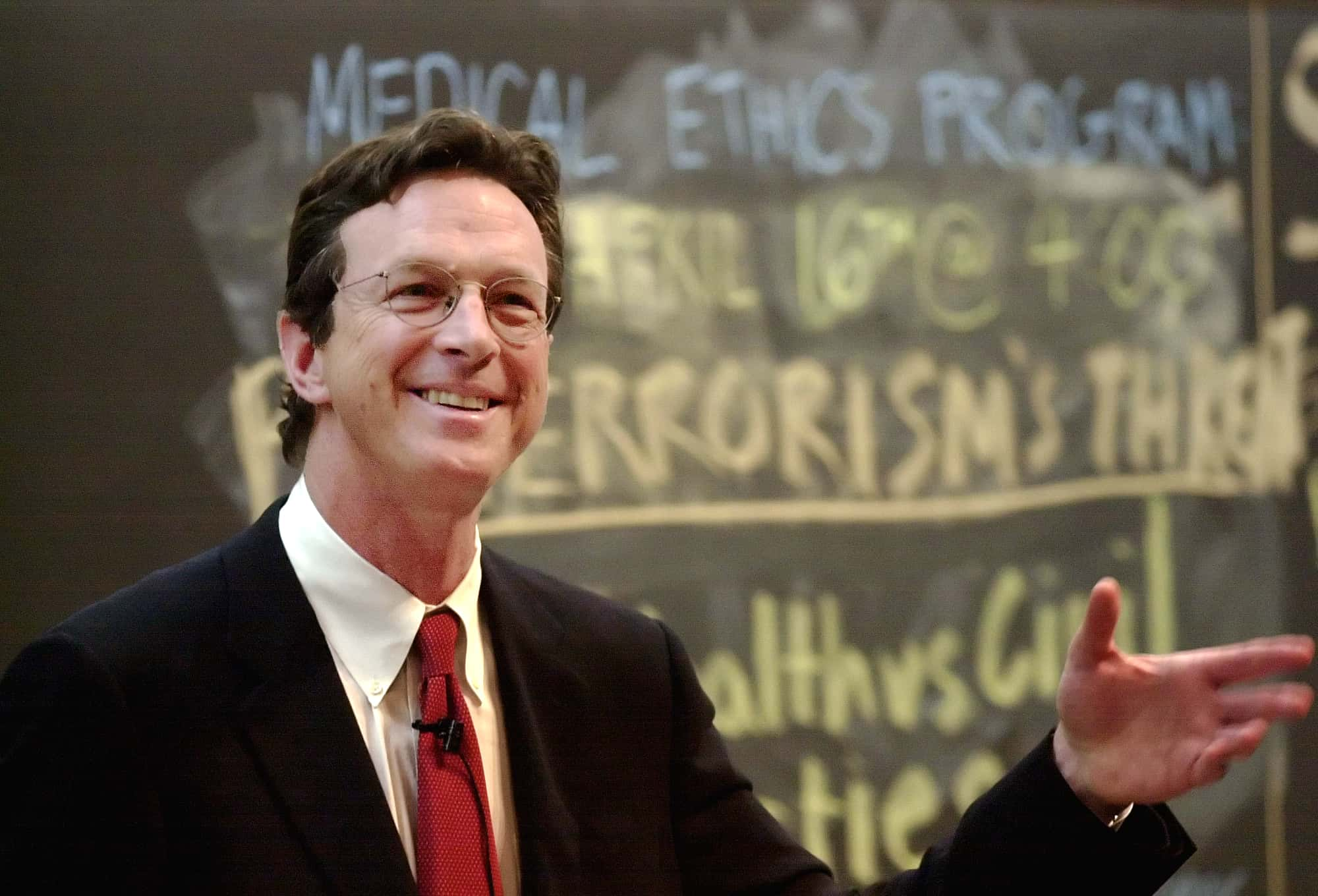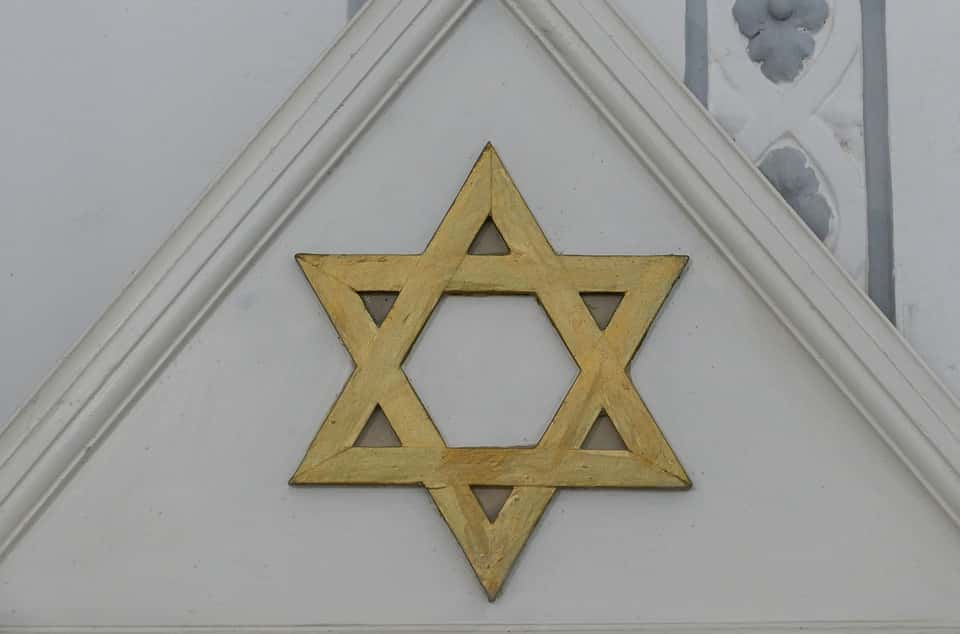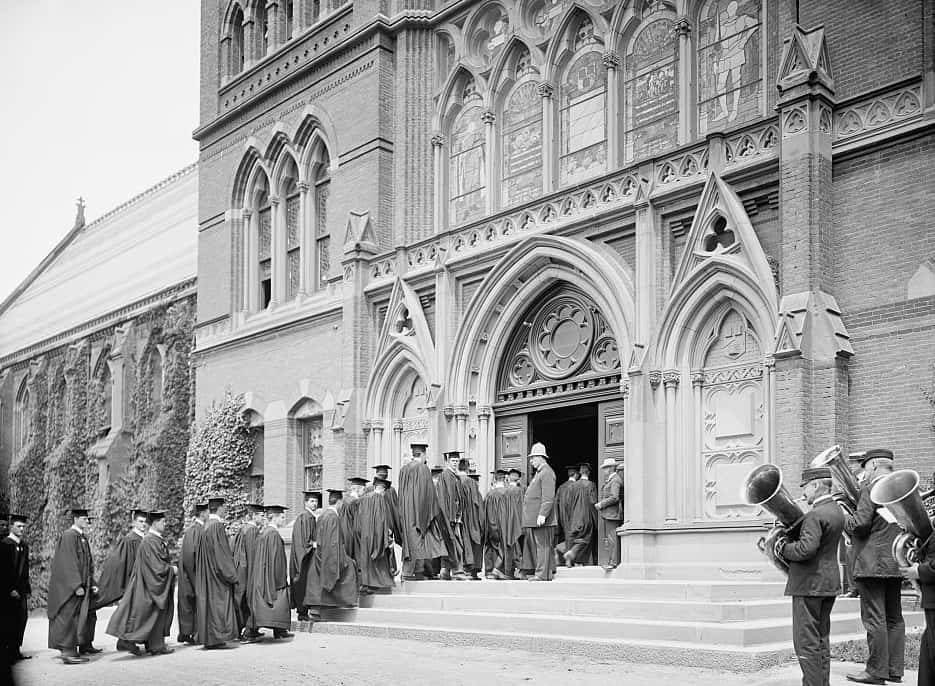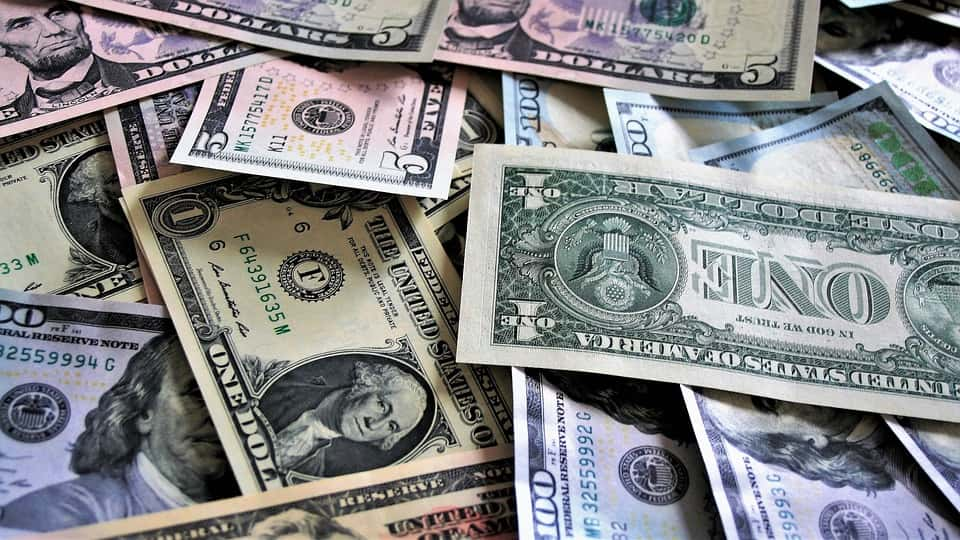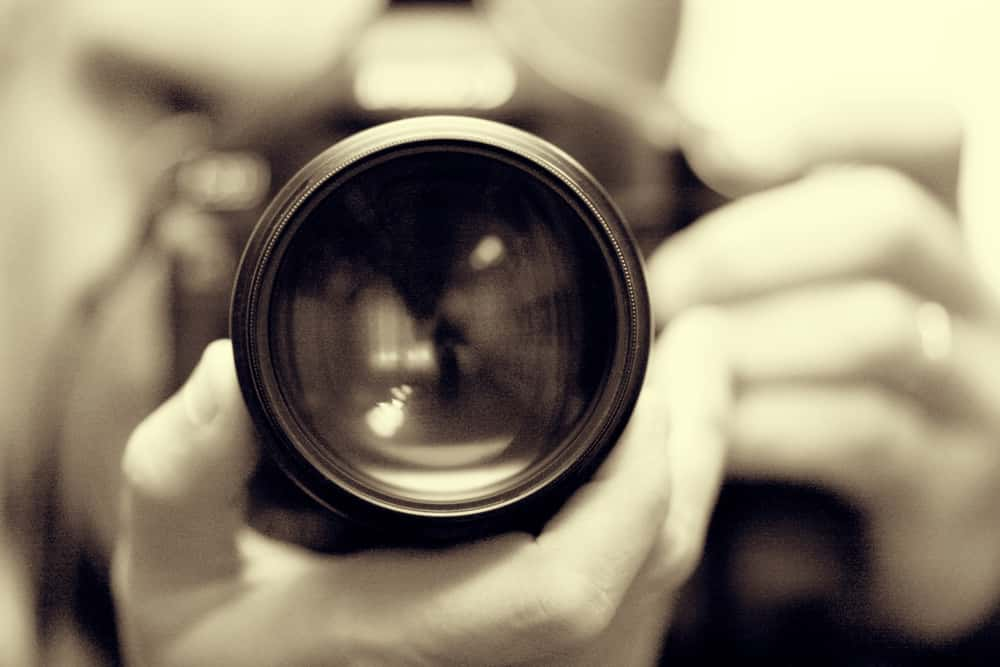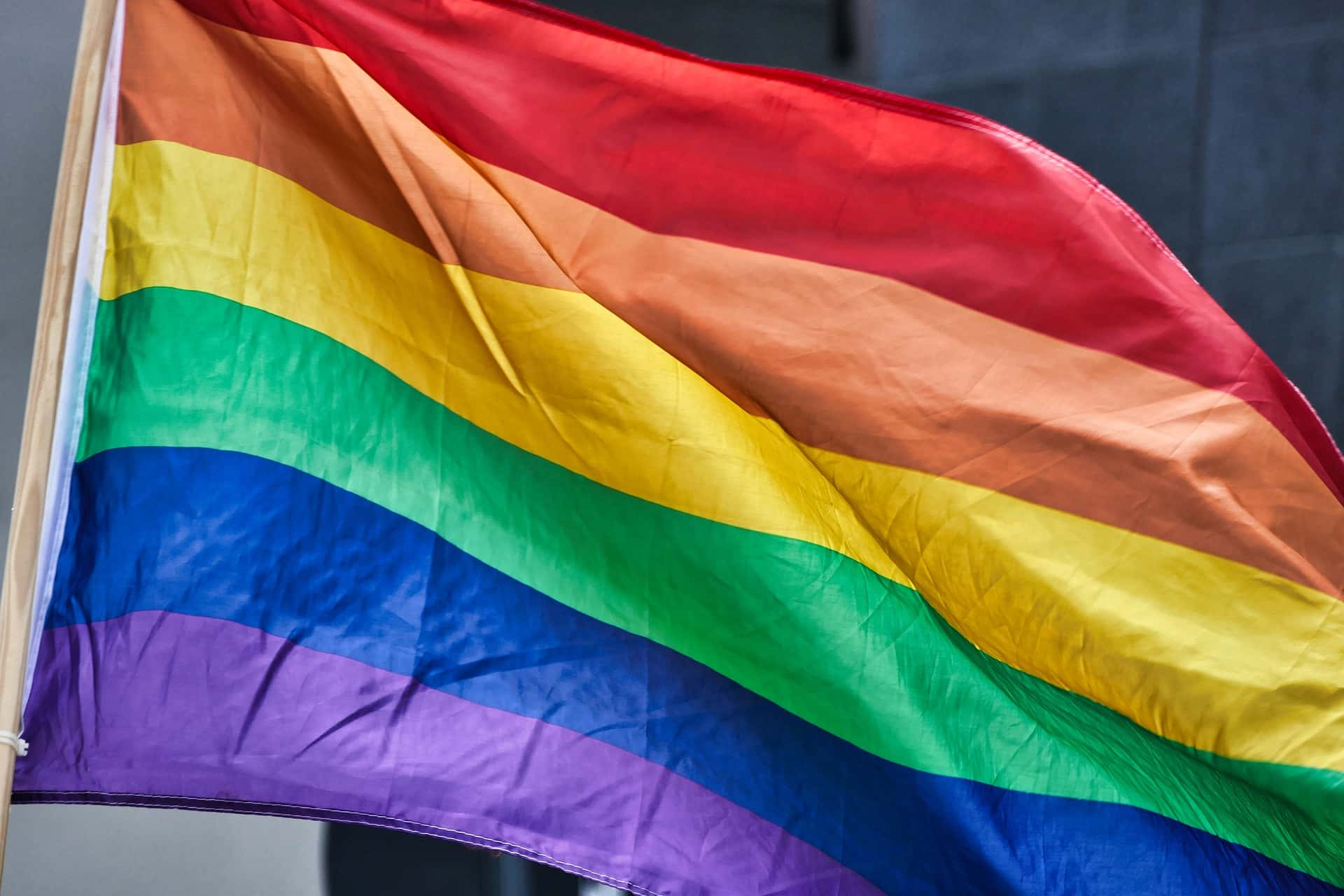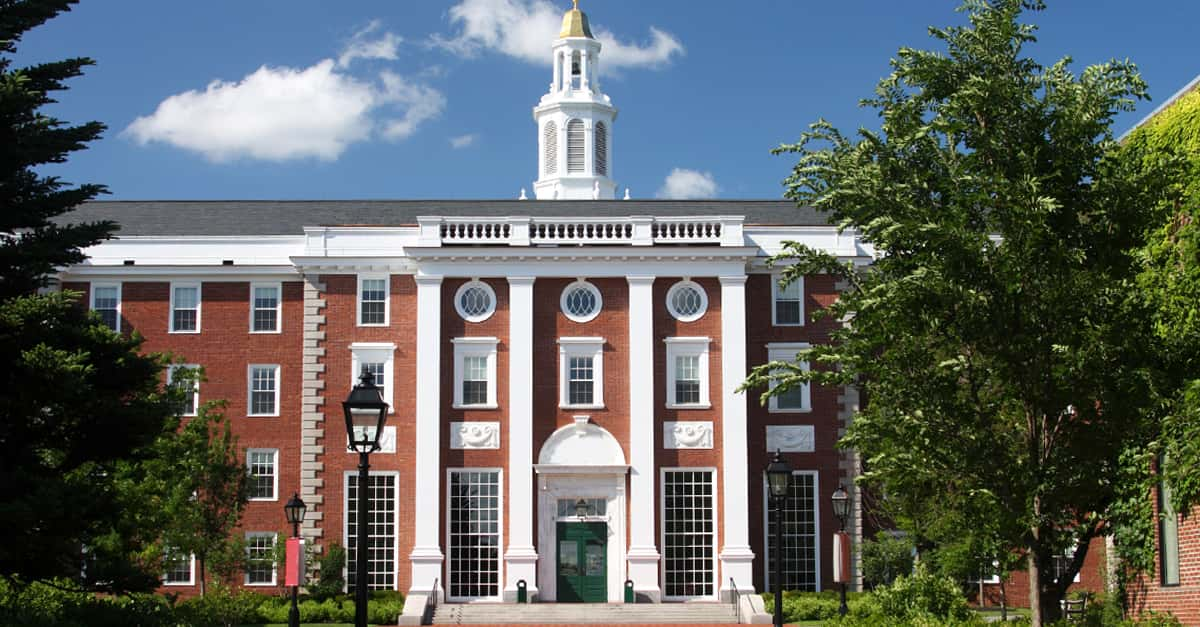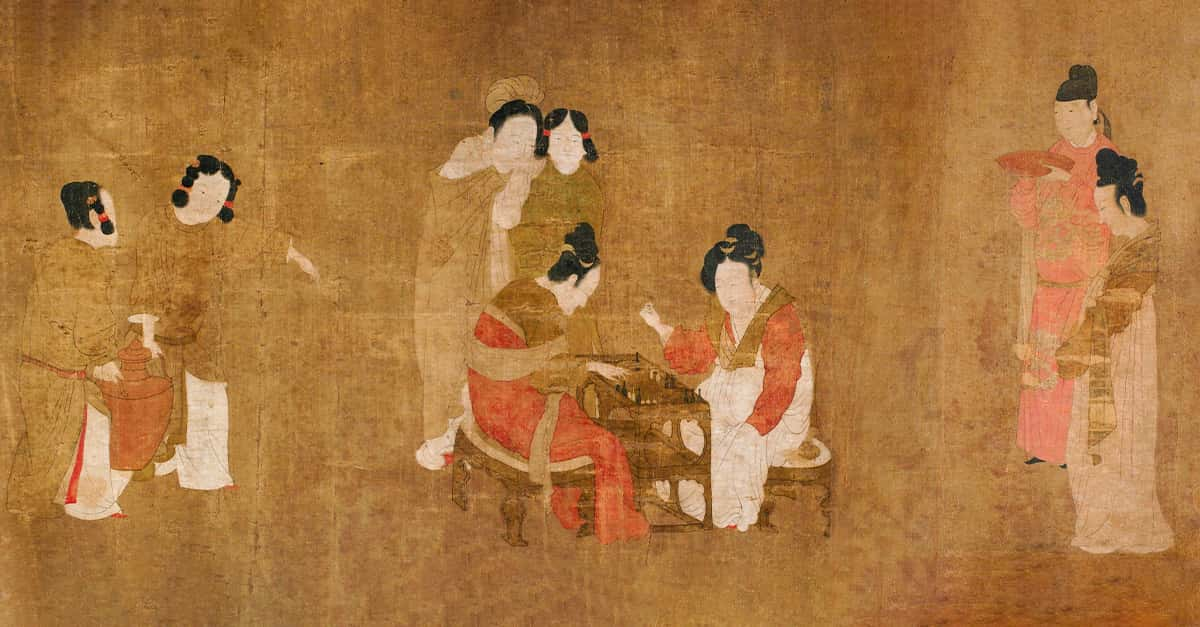"Harvard takes perfectly good plums as students, and turns them into prunes".—Architect Frank Lloyd Wright
Try to name an American university, and most people will probably think of Harvard first. This little school just outside of Boston is one of the oldest and most prestigious universities in the United States, and is consistently ranked as one of the best institutes of higher learning in the world. When a school has a history as long as Harvard's, it’s sure to rack up some interesting stories. We found some of them and included them here in our list of 43 facts about the fabled Massachusetts institution. How do you like them apples?
42. Hazy Rules
Hazing happens under the radar at any university or college, and Harvard is sadly no exception. According to one student, when he was invited to join an elite group at Harvard, he was told to do a number of tasks on his road to initiation. These included eating hamburger patties soaked in booze, chugging brew laced with pubic hairs, and drinking so much that he would end up blacking out on a regular basis. But believe it or not, he has since gone on to continue this tradition on the other side of the initiation process. Lesson not learned?
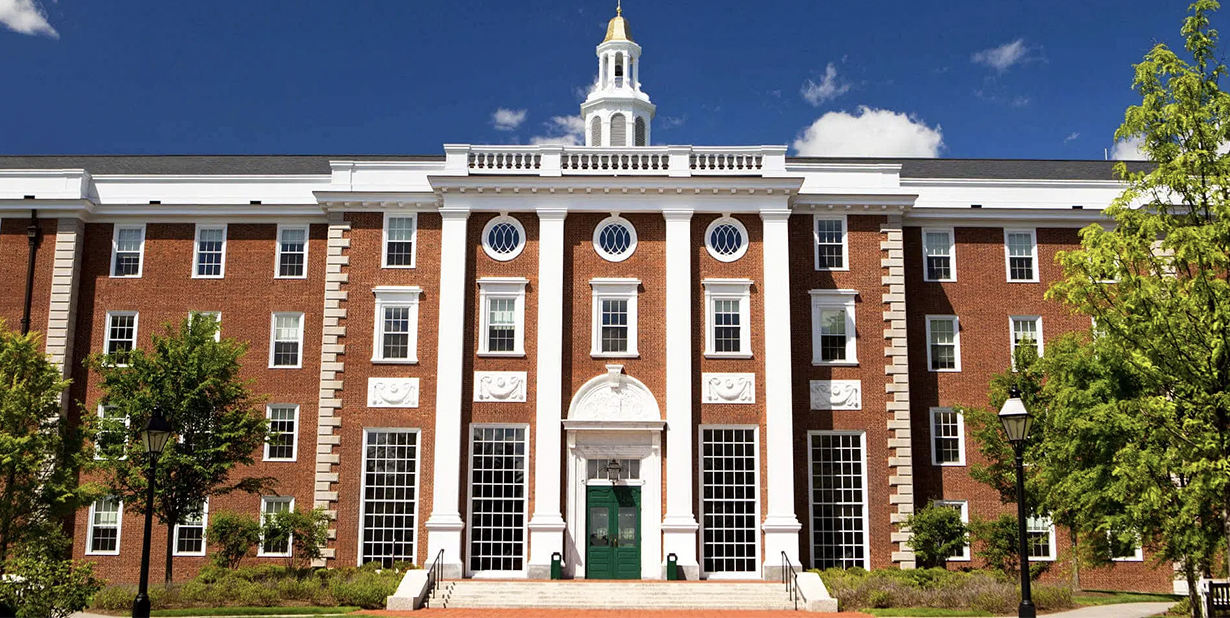
41. A Church in the Wilderness
Back in the 17th century, Massachusetts was a colony with a large population of Puritans who wanted to establish a place to train new clergy for the new world. Therefore, the Great and General Court of the Massachusetts Bay Colony voted to get a college built.
40. Enter if You Dare
Harvard University’s Johnson Gate is the only gate on campus which is closed for most of the year. This is due to a very old superstition that the only time one should pass through the Johnson Gate is when they’re beginning school for the first time, and again when they graduate. It's considered highly unlucky to break this tradition, unless of course you spittle three times over your shoulder while juggling three rabbits feet.
39. Training Young Men to Become Ruthless Capitalists
Abbott Lawrence Lowell served as the president of Harvard in the early 1900s. Besides this position, Lowell owed his wealth to the mills in Lawrence, north of Harvard. The working conditions were so awful that the people who worked there, most them immigrants, were forced to go on strike to try and make the owners acquiesce to improving working conditions (such as maybe adjusting the ventilation to avoid huge numbers of respiratory problems among the workers). Lowell’s answer was to promise his students extra credit on the mid-year exams if they formed a militia to guard the mills and keep the workers in line. Thus, the Calvary Troop B was formed.
38. Student Strike-Breakers
This anti-labor and anti-union sentiment continued as the years went on. In 1919, the Boston officers and the Boston Telephone Operators went on strike, leading to Abbott Lowell calling on Harvard’s students once again to either fill in for the strikers or actively work to break the strikes themselves. Presumably this was written off by Lowell as an internship program.
37. Emancipation Couldn’t Come Soon Enough
The history of Harvard, like the history of the United States, is tainted by the institution of slavery. Over the course of Harvard’s existence, at least three Harvard presidents were reported to have owned slaves, and once many slaves worked on the campus grounds. Harvard also received donations from industries which used slave labor until the Civil Battle.
36. A Dishonorable Discharge
Harvard’s first president was a man named Henry Dunster. In 1654, he gave up the Puritan faith to become an English Baptist instead. This angered his Puritan peers, but the colony’s leaders took action after Dunster followed the Baptist principle by refusing to baptize his newborn son (the Baptist rule being that only adults should be baptized). After Dunster refused to convert back to the Puritan faith, he left the position of president, and the colony of Massachusetts entirely.
35. Go Away, Spielberg
There’s nothing like having a TV series or movie production in your university, which is exactly why the higher-ups in Harvard have banned commercial filming on the university grounds. Seeing it as a distraction to students and their education, Harvard has been a no-film place since 1970. Of course, that didn't stop movies like The Social Network and Good Will Hunting from being set at the school, they just needed to be filmed elsewhere.
 Good Will Hunting (1997), Miramax
Good Will Hunting (1997), Miramax
34. I Doubt This Is What Darwin Really Meant
In the early 20th century, many professors at Harvard had embraced the idea of eugenics, which involves determining which people are fit to continue producing children over those considered undesirable. Speeches were made at Harvard calling for forced sterilizations of those portions of the population who were deemed unfit to procreate. However, the really dangerous aspect of this was that alumni and graduates took this way of thinking into Congress and other positions in the government. A group of Harvard alumni formed the Immigration Restriction League, which gathered hundreds of members into its rosters. Not a good reputation for Harvard to have when a certain major event began in Germany during the 1930s.

History's most fascinating stories and darkest secrets, delivered to your inbox daily.
33. Oh Those Wacky Puritans
Harvard president Increase Mather (yes, that was seriously his name) came into his position in 1692, and he was determined to produce disciplined students who took their faith seriously. During his time as president, students couldn’t earn their bachelor’s degrees unless they could "read the original of the Old and New Testament into the Latin tongue, and resolve them logically". Sounds like a fun guy to be around.
32. Arthur Miller Left That Bit Out
Increase Mather took his Puritan faith very seriously, even for his time and place. Mather and his son, Cotton (what a pair of names those two had…) would later participate in the Salem Witch Trials of 1692-1693. Not a great look, Harvard.
31. If You Can’t Beat ‘Em, Join ‘Em
Incredibly, Harvard has actually tried banning football twice due to worries that it was a violent and dangerous sport (you don't say...). However, despite these efforts, pressure from alumni and students alike forced them to embrace the sport. The school's first concrete football stadium was completed in 1903.
30. Equal Opportunity? Intriguing…
Women were finally admitted to classes at Harvard Medical School in 1945. Their rationale was that it would be in men’s best interests to view women as equals (a novel idea that some still struggle with to this day), while a more cynical reason was the notion that the lowest-achieving third of male students might be replaced with women who performed better. We imagine that rarely was the phrase "baby steps" ever uttered through more gritted teeth than those first classes of women.
29. B for Big Brother
Before he became famous for writing such books as Jurassic Park and The Andromeda Strain, Michael Crichton was an undergraduate at Harvard. He began to suspect his literature professor of giving him unfair grades, so he decided to find out for sure. He copied a work by renowned author George Orwell and submitted it as his own. The professor ended up giving him a B- grade. Personally, we’re more surprised that the professor didn’t catch on to what Crichton did. It’s not like Orwell is underrated or ignored in the world of academia!
28. Just Pretend to Pray, I Guess
As befitting the history of religious intolerance in Massachusetts, Harvard demanded compulsory chapel until the 1880s, just over two centuries after it was first founded.
27. Oh… That Guy… Yeah…
Like many of his time, former Harvard president Charles W. Eliot was a major supporter of eugenics. He spoke out against biracial relationships, even when it was a question of a Catholic marrying a Protestant. As he told a San Francisco audience, “There must be no blending of the races". On an unrelated note, Eliot House continues to be named in his honor at Harvard.
26. Don’t Touch It!
It's an old superstition that rubbing the toes of John Harvard’s statue is good luck. What is less lucky is the fact that Harvard students are well aware of this routine and find interesting ways to prank unsuspecting visitors who rub the statue. We won’t go into what exactly they’ve been known to do, but if you did know, you would never touch that statue again!
25. No Girls Allowed!
Harvard’s Porcellian Club is famously all-male and has remained so ever since its inception more than 200 years ago. In 2016, its president, Charles M. Storey, decided that he needed to defend the club’s exclusion of non-cisgender and non-male members. In his words, “Given our policies, we are mystified as to why the current administration feels that forcing our club to accept female members would reduce the incidence of gender assault on campus. Forcing single gender organizations to accept members of the opposite gender could potentially increase, not decrease the potential for gender misconduct". It’s very nice to know that an elite club preparing the best of the best of American society can’t be trusted to have women around without someone getting hurt.
24. Just Like at the Country Club!
In the early 20th century, as Catholics and Jews began to increase their presence at Harvard, the Protestant old guard suggested making efforts to keep them contained. Harvard president Abott L. Lowell (this guy again?!) attempted to set a quota on Jewish enrolment at Harvard. These talks about quotas eventually were gone with the end of WW2, presumably as it finally became unfashionable to publicly suggest the Allies were being too hard on Adolf H.
23. Six out of a Hundred Ain’t Good
It’s become a cliché that getting into Harvard University is an incredibly difficult progress, but this cliché is quite on the nose, it turns out. Of all the people who apply to Harvard yearly, only 6% actually get accepted. Maybe they should try buying a lottery ticket while they're at it!
22. Social Slumming
During the late 19th century, a time also known as the Gilded Age, there was an extreme gap between the way that the elites lived life and how the impoverished masses scraped out a living. People at Harvard tended to belong to the former group, but that didn’t mean they didn’t know what it was like to be poor. One social activity undertaken at the university (as well as in other circles of high society) was known as a "poverty party". Guests would dress down in ragged outfits and were fed low-quality food from tinware (tin being a material used by the poor). People would indulge in the dialects of the impoverished and presumably sing songs from Les Miserables. How utterly fabulous!
21. Surely This Won’t Offend Anyone!
Of course, while it’s easy to sigh write off the Gilded Age as being a different time, poverty parties managed to outlive that time period. Like a truly bad idea which never dies down, poverty parties were held in the 1940s and 1950s. While Harvard seems to have left this tradition behind, a fraternity at the University of Missouri held a Poverty Party where the guests had to wear clothes that they got from Goodwill. This was in 2015.
20. A Man to Make Scrooge Weep
In 1929, the Great Depression hit the United States and the rest of the world. Not surprisingly, by December, things were looking bad for the women who worked as maids maintaining Harvard’s Widener Library. Many of them were in their 50s and 60s and relyied on these jobs to stay alive. When they requested to be paid the state-required 37 cents an hour (which was a two penny raise from what they were getting), Harvard president Abbott Lowell (yes, that guy again) fired them all the week before Christmas without pay, putting many of them on the streets without money to get through the holiday. If only he'd had a change of heart after a visit from three ghosts soon after.
19. May You Rot, Lowell
Luckily, some people associated with Harvard actually had a heart. Over fifty Harvard alumni stepped in and, under the Harvard Square Deal Association, made sure that the maids received the pay that they were owed. They also made sure that their sour feelings towards Lowell were well known. Lowell never apologized for his decisions, and actively resented the alumni for undermining him and bringing bad publicity to Harvard. He naturally failed to see that he was bringing bad publicity to humankind. Oh, and of course, Lowell House is still an important undergraduate residence at Harvard today.
18. Things Need to Change
In 2015, Harvard president Drew Faust reported that in a survey undertaken that year, nearly a third of all undergraduate women had experienced gender assault in one form or another since they had started at Harvard. More than three quarters of the assaults allegedly took place in dorm rooms.
17. An Old Hare Hoar
Leonard Hoar was one of the earliest presidents of Harvard, serving for three years between 1672 to 1675. He’d been sought out for the position, but his extreme religious views allegedly alienated the students and staff immensely. Although Hoar oversaw the inclusion of an orchard, a workshop, and a chemical laboratory to the school, the number of students dwindled to just three under his watch. This caused a movement to force Hoar to resign before he caused the whole school to shut down for lack of pupils!
16. Time to Own Up
In 2017, Harvard revealed a memorial on its grounds which finally acknowledged its profiting from slavery during the centuries in which it was lawful. The memorial pays a sad tribute to the slaves whose labor brought wealth to a university which was part of the infrastructure which kept slavery alive in the United States. This was a big step forward for a university which would have normally coughed and awkwardly shuffled its metaphorical feet at the mere mention of slavery.
15. The College Experience No-one Deserves
The history of gender assaults on university and college campuses is tragically underreported even to this day, and the further back you go, the worse it gets. As one former 1960 student at Radcliffe College (the traditional women’s college at Harvard) reflected: “Many of us were raped before the first week of orientation ended. We were advised by assigned 'big sisters’ to keep quiet about it and consider it a ‘milestone’ achieved rather than as a gender assault".
14. Sinister Statistics
In 1983, a report was completed at Harvard, sent out to all the faculty at the time, 1,000 graduate students (500 male, 500 female), and 2,000 undergraduate students (same ratio for equality purposes). The response rate was 70%, and it painted a very ugly picture. According to the document, “Half of male faculty and a third of male graduate students said they thought gender harassment was not a problem at Harvard". No less than 75% of the male faculty dismissed female harassment as not being 'a matter for the University’s concern.'”
13. Cheaters Never Prosper
In 2012, 125 students were found guilty of cheating on a take-home exam for a government class focusing on Congress. As a result of subsequent investigations into this scandal, Harvard revealed that up to 70% of the students caught were made to withdraw from Harvard altogether. Safe to say that Yale had a field day with this bit of news, even coming up with a humorous shirt for Yale students to wear during the Harvard-Yale football game which read “Try cheating your way out of this one!”
12. Safe Intercourse
John C. Rock was a Harvard professor studying fertility, while Gregory G. Pincus was an assistant professor studying conception. The work of these two, started at Harvard, would eventually lead to the development of the Pill, a landmark moment in the history of birth control. Ironic then, that Pincus was opposed to sensual freedom, whether it was men or women! Rock, meanwhile, was a Catholic who resolved his faith with his work by seeking to find a cure for overpopulation, especially among those races of people he didn’t like. If you’re looking for a positive figure in this story, look no further than the woman who made their work possible: feminist and birth control activist Katherine D. McCormick, who inherited $35 million upon her husband’s passing and funded their research.
11. Why is There Always a Catch?!
Unfortunately, this research was highly questioned for its ethics, even during the 1950s, which wasn’t a decade well known for its tolerance or political correctness. After too many of their test subjects dropped out and too many people began questioning their methods, Rock and Pincus eventually went south to Puerto Rico, where they had less supervision; as was reported by Drew C. Pendergrass and Michelle Y. Raji in 2017: “a memo from Pincus to Rock indicates that they recruited 265 'sufficiently intelligent' women for whom 'pregnancy would be acceptable, or at worst inconvenient.'” There was also no mention of any financial compensation for these subjects. Yikes.
10. You Sit on a Throne of Lies!
Harvard Yard famously features a statue marked “John Harvard, Founder, 1638". However, the man whose image is replicated in the statue is not John Harvard. Nobody knows what he looked like, so the image of student sculptor Daniel Chester French was used instead. John Harvard also wasn’t the founder of the school, he was a benefactor for whom the school was named. On top of that, the school was actually founded in 1636! The common name for this statue among the students is allegedly the Statue of Three Lies.
9. The Redistribution of Wealth
Due to its age and reputation, Harvard makes a lot of money on interest from its endowment. The amount is so large, in fact, that it could offer free tuition to all of its students and still make money off the interest! Think about that next time you’re paying off your student loans!
8. A Horrid Disappearance
John W. Webster was a professor of chemistry and geology at Harvard during the 1840s. He also owed considerable sums of money to Dr. George Parkman, a noted philanthropist, Harvard alumni, and moneylender. By 1849, the interest on his loan was immense, but on the 23rd of November, he invited Parkman to meet with him to have the debt repaid. Parkman wasn’t seen again, leading to a panicked search for Parkman which included dragging the Charles River and Boston Harbor.
7. Vivid Details to Give Edgar Allan Poe Nightmares
One of the janitors at Harvard, Ephraim Littlefield, became a suspect in the eyes of the authorities, but he himself suspected that Prof. Webster was involved in the disappearance of Dr. Parkman. Acting on his own, Littlefield allegedly tunneled through a wall to access Prof. Webster’s private bathroom. To his everlasting horror, Littlefield ended up finding severed body parts. The officers picked up the search, eventually finding a headless, armless torso in Webster’s office. This was what Parkman’s widow had to look at to identify it as belonging to her husband.
6. The Birth of CSI
The 1850 trial of Prof. Webster for the horrific manslaughter of Dr. Parkman was a landmark moment not just for Harvard, but also for the US lawful system. Two anatomists from Harvard, Oliver Wendell Holmes and Jeffries Wyman, were brought in to study the remaining body parts and determine the cause and manner of his passing. It was reportedly the first case in US history where forensic anthropology played a leading role in the prosecution of a murderer. Harvard would go on to embrace the field of forensic anthropology. Allegedly one class was devoted entirely to saying witty things while putting sunglasses on one’s face.
5. Using His Skills
One of the men who testified at the trial of Prof. John Webster was Dr. Parkman’s dentist, Dr. Nathan Keep. He testified that the jawbone found among the remains belonged to Dr. Parkman, demonstrating that it fit a mold which he’d made of Parkman’s teeth. Keep later founded the Harvard School of Dental Medicine in 1867.
4. The Fate of the Accused
While he was being held in lock up, Prof. Webster attempted to poison himself with strychnine, but was unsuccessful. He was sentenced to capital penalty by public hanging after three hours of deliberation by the jury. His sentence was carried out on the 30th of August 1850. Safe to say that, despite the fact that it's named buildings after some pretty despicable people, Harvard won't be naming any after Webster.
3. Talk About a Rigorous Screening Process!
If you were a student entering Harvard at any point between the 1940s and the 1970s, you had photos of yourself taken for Harvard’s records. The crazy thing was that the students were all undressed when these photographs were taken! This means that, unless they were destroyed at some point, there are rows and rows of files which contain mildly racy pictures of such figures as George W. Bush, Conan O’Brien, Margaret Atwood, Tommy Lee Jones, and Terrence Malick (no wonder he’s so camera shy!).
2. Wait, What?!
To make a story of undressed photographs being taken of every first-year student entering Harvard (or Yale, it turns out) even more creepy, the students were never asked to give permission for these photographs to be taken. To further add a layer of horror to this, the general belief is that the photographs were taken to further a study comparing body types with levels of intelligence, not unlike a similar program which the Nazis undertook just the decade before these photos began to be taken. Maybe read the fine print before signing up as a student there.
1. Skeletons in Harvard’s Closet
In 2002, a discovery within Harvard’s archives revealed that in 1920, a group of Harvard associates formed a "Court" (term loosely used) and ruthlessly interrogated a group of students on suspicion that they were gay. Those found guilty were forced to leave not only Harvard, but the city of Cambridge as well. Two of those targeted tragically took their own lives and the Court’s actions were kept a close secret for over 80 years. As awful as this is, it would have been considered normal for the time period.
Sources: 1, 2, 3, 4, 5, 6, 7, 8, 9, 10, 11, 12, 13, 14, 15, 16, 17, 18, 19, 20, 21, 22, 23



